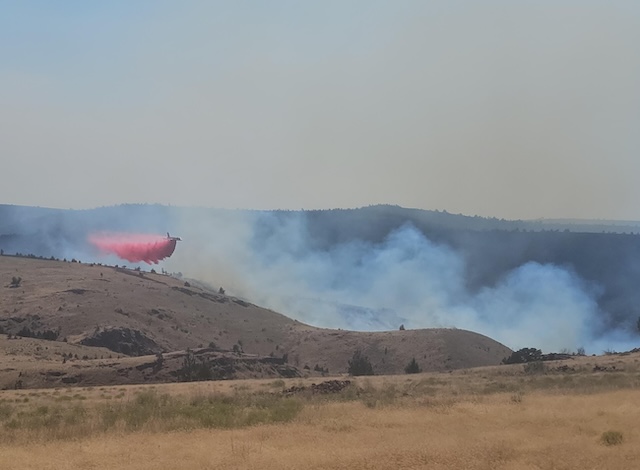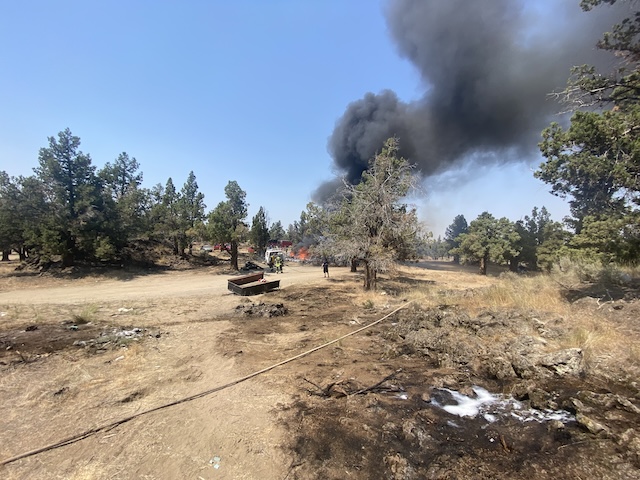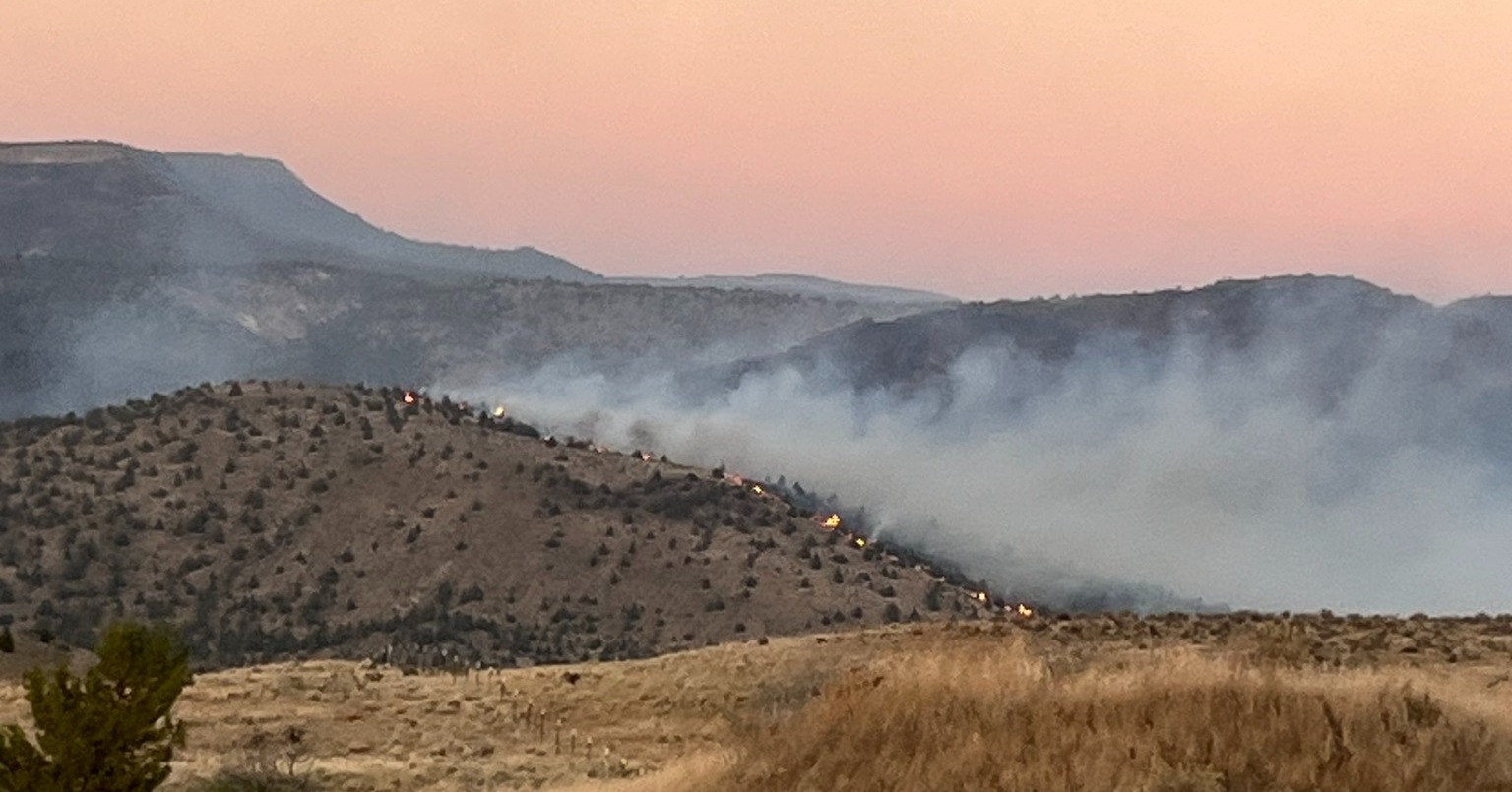Naomi Pomeroy’s death calls attention to hidden dangers that can lurk in Oregon’s rivers
Published 4:41 pm Sunday, August 4, 2024

- Naomi Pomeroy sits inside Cornet Custard on June 30 in Portland. Pomeroy, an award-winning chef who helped put Portland on the map as a culinary destination, has drowned in an inner tubing accident in the Willamette River, authorities said. She was 49 years old.
The spot where sheriff’s deputies think beloved Portland chef Naomi Pomeroy died last month while floating down the Willamette River near Corvallis looks innocuous.
Two scrawny branches protrude from a submerged tree in the water. They look like they might scratch the skin of anyone who floats by but not kill them.
Trending
But when Pomeroy, her husband and a friend passed by on two inner tubes and a paddleboard July 13, the leash of the paddleboard was strapped to Pomeroy’s leg. The leash was standard issue — not the much-less common kind that comes with a quick release — and after it and possibly the rope tying the inner tubes together got entangled in the submerged tree known as a “snag,” Pomeroy was pitched into the water. Pomeroy, who wasn’t wearing a life vest, was unable to free herself and drowned.
Her death at age 49 sent shockwaves through culinary circles but also leagues of Oregon water recreation enthusiasts. It and the tragic drownings or presumed drownings of at least 18 others in the state so far this summer serve as poignant reminders of the dangers of floating, swimming in and boating upon Oregon’s waterways.
Never, water rescuers say, let your guard down, even in the relatively warmer, gentler rolling waters of mid- to late summer.
“It did not look bad at all, but that’s how dangerous those little snags can be. It wasn’t a treacherous stretch of river,” said Lt. Toby Bottorff, who runs the Benton County Sheriff’s marine patrol unit and snapped the photo of the location he suspects Pomeroy got caught on. “When you get hung up, the paddleboard goes on one side, the person goes on the other. And you cannot swim up to get around that.”
Additionally, Bottorff said, the unyielding flow of the river will push the person attached to the leash diagonally down toward the river bed, like a lure at the end of a fishing line being propelled downstream. Escape, without a quick-release mechanism that straps around the waist and detaches with the simple pull of a cord, is nearly impossible, he said.
Bottorff knows of other instances where a paddleboard leash without quick-release mechanisms turned nearly fatal or fatal. Last summer, also on the Willamette River, Benton County deputies rescued a 61-year-old man whose paddleboard had gotten sucked under a “strainer” — often a fallen tree that’s partially submerged — and remained under water while his ankle was still tethered to the leash. The man was losing his grip on the tree — and his ability to keep his head out of the water without a life jacket on — when the deputies managed to free him, the sheriff’s office said.
Trending
In neighboring Lane County in 2015, a 66-year-old Eugene man died after he, his paddleboard and the leash strapped to him got entangled in an underwater root ball on the Willamette River. He was wearing a life jacket, which water safety experts say vastly increase one’s chances of survival but are no guarantee.
But Pomeroy’s death has cast new and widespread attention on a problem that has burgeoned as paddleboards have surged in popularity over the past decade or so. Three days after her drowning, the Oregon State Marine Board sent out a news release emphasizing the importance of quick-release leashes on moving water, primarily rivers.
“There’s an emerging trend when we look at the causes for fatalities in recent years where a person, otherwise well outfitted, died because their leash to the SUP (stand-up paddleboard) became entangled in brush or other debris on area rivers,” said Brian Paulsen, the marine board’s boating safety program manager. “Most ankle leashes used by SUP users are not designed for quick release. If you get it tangled on rocks or downed trees, the leash could hold you underwater.”
Water rescuers across Oregon also have been stressing other often overlooked safety precautions for river enthusiasts.
Don’t strap inner tubes, paddleboards or other inflatables together when floating downriver:
Though not forbidden by law, experts say many people don’t know the dangers of tying inflatables together. The ropes or straps between them can easily get caught by obstacles like bridge pylons, snags or strainers in the river. When that happens, people often get tipped into the water, often where water flow and other conditions are at their most dangerous.
Also, when a cluster of inner tubes are strapped together, it becomes far more difficult to steer away from obstacles like strainers or rough rapids.
Clackamas County Sgt. Nate Thompson, who oversees the marine unit that responds to incidents on the Sandy, Clackamas and Molalla rivers, said he and his colleagues rescued five people on inner tubes and a sixth on a paddleboard a few weeks ago on the Clackamas River. The group was tethered together and couldn’t navigate away from a massive strainer, he said.
Everyone fell into the water. Half of the people were sucked under the tree; the other went over the tree. No one was wearing a life jacket. One man was petrified, unable to make it to shore.
“He just refused to let go of the branch,” Thompson said. “He was just hanging there, barely with his face out of the water and holding onto the life jacket we gave him. He wasn’t a strong swimmer, but it was like, ‘You’re not going to stay here forever.’ We ended up having to go up to him with our boat and pull him off.”
Paddleboard straps only
With the exception of a paddleboard with a quick-release mechanism, don’t tether straps to your body. Travis Soles, captain of Gresham Fire’s Swift Water Rescue Team, remembers the man who positioned himself in an inner tube and strapped his wrist to a cooler in a second inner tube. When the strap got caught on a snag, the man fell into the water on one side of it and the cooler on the other. The snag held tight onto the strap, with the man and the cooler held in place downstream by the current. To free himself, the man would have had to muster superhuman strength to swim upriver and around the snag, but that was physically impossible, Soles said.
Soles said because the man was on a remote stretch of the Sandy River, it took a while for rescuers to get to him.
“He fought to stay above the water for a good half hour at least,” said Soles, who ended up swimming out to the man and cutting the rope off his wrist after trying to reach the man by boat and a rope across the river failed.
Start early
Sturdy inflatables
Soles, the Gresham Fire captain, said it’s not uncommon to see people staking their safety on a thin-walled inner tube, air mattress or pool toy.
“We’ll see people going down the Sandy River on those giant swans or unicorns,” Soles said. “And we’re like, ‘That’s not a good choice.’”
Thompson, the Clackamas County sergeant, said toy floats are fine for pools, but not wild flowing rivers like most of the waterways around the greater Portland area.
“They’re not designed for floating Level One and Two whitewater rivers; they’re for maybe like a lazy river or somewhere else that doesn’t have rapids or rocks or sticks,” said Thompson.
“We pull hundreds of these popped floaties out all the time,” he continued. “We get calls constantly that something somebody’s been floating on is popped and not working.”
Life jackets, life jackets, life jackets
Experts say it’s the No. 1 safety precaution, but frequently not heeded. Even if the water is calm, life jackets have time and time again saved lives even of the best swimmers when they’ve slipped and hit their heads or been caught in underwater currents.
With few exceptions, Oregon law requires children age 12 and under to wear life jackets at all times while on boats, which include paddleboards and two or more inner tubes tied together, according to the state’s definition. The law also calls for each adult to have a life jacket on board, but they’re not required to wear it unless they’re on extreme whitewater rapids.
Bottorff said he and his fellow deputies issue warnings but also hand out $115 tickets to drive home the importance of the law and to save lives.
“Word spreads faster in the recreational community,” Bottorff said, “when we write tickets than when we’re giving warnings.”
Portland Fire & Rescue spokesman Rick Graves said failing to remain vigilant can be the difference between life and death.
“The statistics are probably ‘nothing is going to happen,’” Graves said. “But it only takes once, and then you don’t get another chance.”








